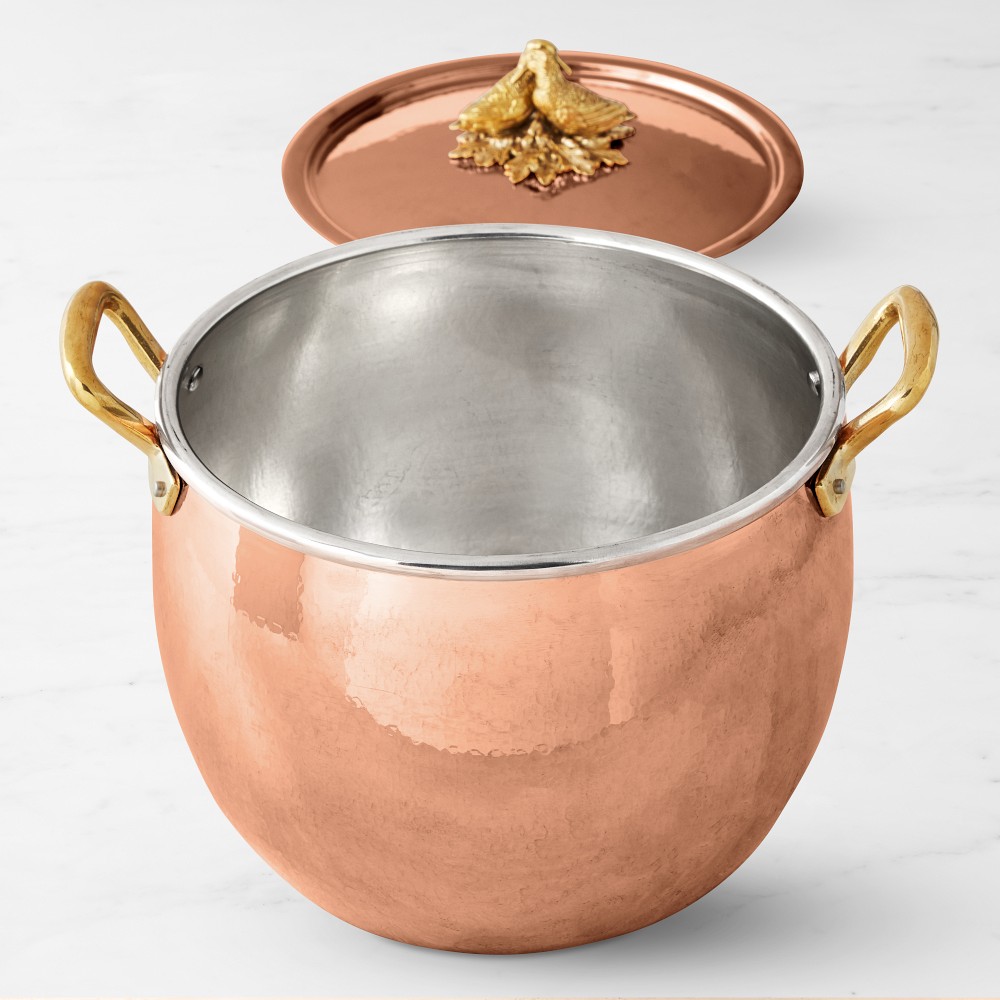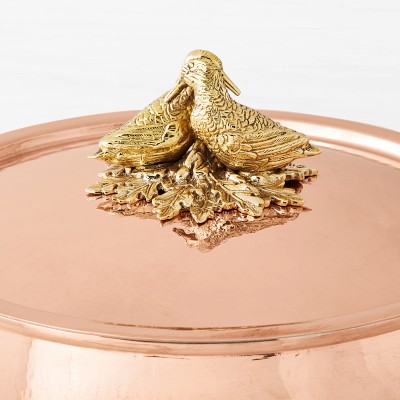Home
/
Cookware—Shop by Material—Copper Cookware
/
Ruffoni Historia Hammered Copper Stock Pot, 14-Qt., Lovebirds Knob
Ruffoni Historia Hammered Copper Stock Pot, 14-Qt., Lovebirds Knob
Quantity
-
Detail
Summary
Hand hammered by master coppersmiths in Italy, this heirloom-quality stock pot brings the spectacular beauty and outstanding performance of Ruffoni copper to your kitchen. Each piece is crafted from a single sheet of copper, then lined with durable nonreactive tin. Its generous size is perfect for cooking soups, stews, pastas and large shellfish, and it makes an impressive presentation at family meals, holiday dinners or special celebrations.
- A lovebird finial makes this stock pot an ideal wedding, anniversary or housewarming gift.
- Crafted of hand-hammered copper for excellent heat conductivity.
- Interior of pot and lid are lined with durable nonreactive tin.
- Lovebirds are made of hand-cast bronze.
- Riveted brass handles.
- Generous 14-qt. capacity is perfect for preparing meals for a crowd.
- Made in Italy.
Dimensions & More Info
- 11" diam., 8 3/4" high; 12" high with lid.
- 14" wide with handles.
- 14"-qt. cap.
- 8 lb. 11 oz.
- Made in Italy.
Additional Information
- This product contains the following chemical: tin (and compounds). For more information, visit the Williams Sonoma Disclosures page.
Use & Care
Use
- Ideal for gas and electric cooktops (not induction compatible).
- Oven safe to 450°F.
- To protect tin lining from damage, do not heat pan empty or at temperatures above 450°F.
- Use wood, plastic or heat-resistant nylon tools to avoid scratching tin lining.
Care
- Allow pan to cool before washing.
- Hand-wash.
- Dry immediately with a soft cloth.
- Avoid using steel wool, steel scouring pads or harsh detergents.
- Copper will develop a rich patina over time. This will not affect the pan's cooking performance. To keep the exterior looking new, use copper polish or a combination of lemon and salt.
- Tin lining protects food from reacting with copper but will become discolored with use. Depending on the frequency of use and types of food cooked, the tin lining may eventually need to be replaced. To prolong the liner's usefulness, avoid cooking acidic ingredients in tin-lined cookware.
-
Customer ReviewsNo comments





